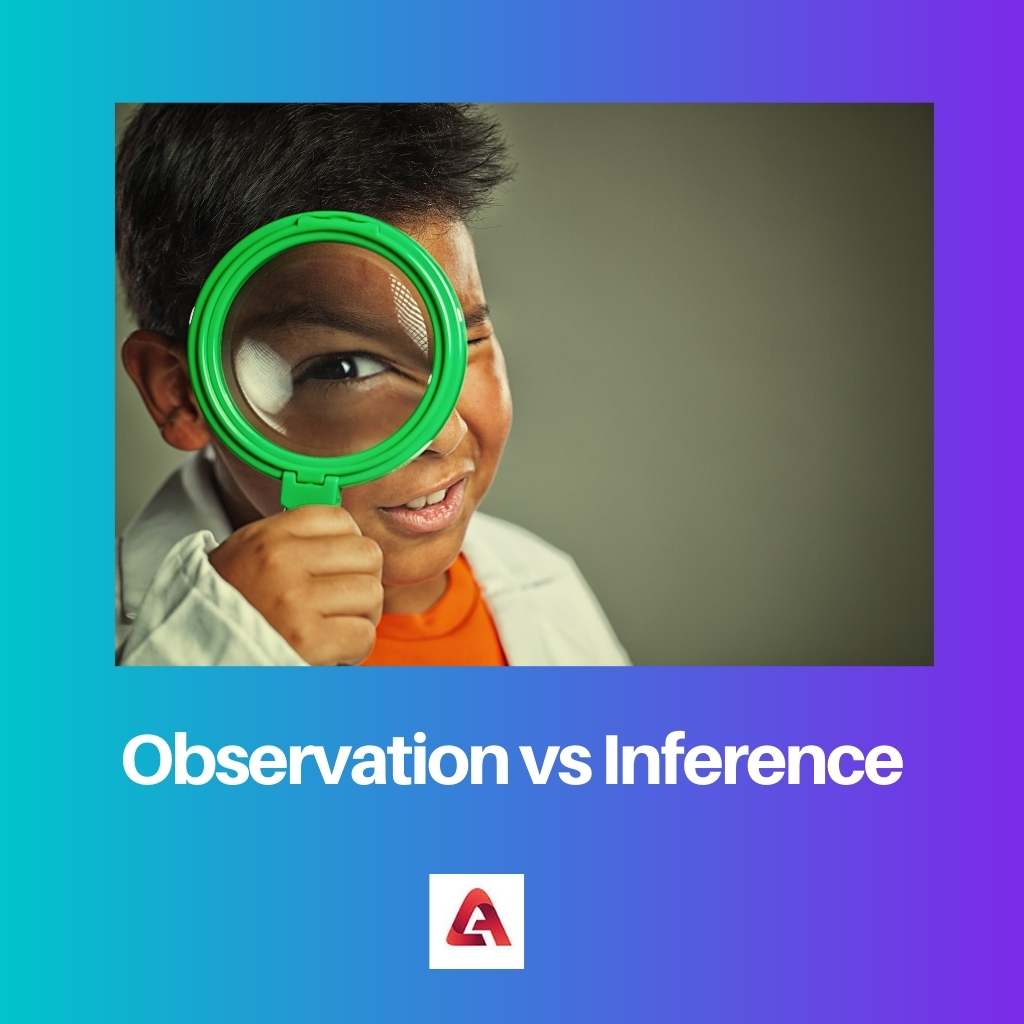You’ve probably come across the phrases observation and inference multiple times in statistics as well as experiment documentation.
The two processes preceding actual comprehension are observation and inference, and these phrases are commonly employed in the field of sciences and statistical computations.
The two concepts are so linked that a layperson would mistake them for synonyms, but the fact is that they are not. You’ve come to the right location if you’re seeking the distinctions between observation and inference.
Key Takeaways
- Observations describe facts gathered through senses, while inferences interpret these facts.
- Observations are objective, but inferences are subjective and rely on reasoning.
- Inferences can change based on new observations, while observations remain static.
Observation vs Inference
The difference between an observation and an inference is that an observation is a genuine depiction, but an inference is an interpretation of the acquired facts. Although observation is the meticulous examination of objects surrounding, inference is the judgment formed from that thorough observation. In contrast to observation, which is what one sees, the inference is a supposition based on what one has observed. The inference is just a hypothesis based on the observation that has been performed.

The primary component of every scientific approach or procedure is scientific observation. The primary talent of a researcher is observation.
Receiving knowledge and facts that are obtained by our senses and intelligence, or gathering data using scientific methods and devices, is what observation is all about. An observation is any data collected during an investigation or experimentation.
The inference is a method through which a judgment is reached without total certainty but with a high degree of likelihood in relation to the data from which it is founded. Questionnaire surveys may be utilized for both characterizations as well as analysis.
Estimating demographic totals, averages, and percentages are examples of descriptive usage. Analytical applications include the testing of demographic hypotheses. Making statistical conclusions is one of the analytical applications.
Comparison Table
| Parameters of Comparison | Observation | Inference |
|---|---|---|
| Meaning | The primary component of every scientific approach or procedure is scientific observation. | The act of generating rational conclusions from established facts or conditions is referred to as inference. |
| Utility | The utility of an observation is to develop researching and perceiving skills. | The utility of an inference is to be able to synthesize the observation with the help of a hypothesis to derive a conclusion. |
| Nature | Observation is subjective in nature. | Inference is objective in nature, |
| Implies | The subject under investigation is being closely monitored. | Deriving a conclusion logically by argument. |
| Synonyms | Monitoring, scrutiny, inspection, surveying, surveillance. | Deduction, conclusion, reasoning, conjecture, speculation. |
What is an Observation?
The phrase may indeed apply to any data gathered throughout the course of the scientific study.
Observations might be subjective, which means that merely the lack or existence of quality is noticed, or quantitatively, which means that a calculated value is assigned to the observed phenomena by counting or measuring.
The active data collected in this study from the main source is referred to as observations. Observing in living organisms makes use of the senses.
Observation in science may also refer to the interpretation and gathering of data using scientific tools.
Observation is defined as keeping a careful eye on the environment around you using your senses. Observation is a stepping stone to inference. It provides information for interpretation.
One person’s perspective may differ from another’s. The information, experience, and attitude of the individual always impact it.
One of the most important components of observation is paying close attention. The much more observant one is, the more accurate the inference.
An observer should not only have an eye to see things, but he will also have a sharp eye to make observations. It entails the methodical collecting and gathering of data, activities, and objects.
Furthermore, the data will be subjected to checks and balances to ensure the data’s quality and dependability.

What is an Inference?
In basic words, inference refers to a logically derived premise or judgment based on facts plus observations. It is a determined guess supported by evidence and conditions.
It is a component of thinking and thought that might be correct or incorrect, justifiable or unjustified, rational or irrational.
When the total population is high, it is difficult to investigate individual items in the community, that’s why a sampling at random is elected to describe the complete population.
Just on the premise of the sampling, generalizations about unidentified demographic features are formed. In stats, inference consists of two steps: hypothesis testing and estimate.
It is solely based on empirical observation. The inference is a judgment gained through careful observation. The inference is an explanation of things that have been seen.
A valid conclusion may only be drawn if sufficient data or information exists. Inference can assist in analyzing diverse conditions and making sound conclusions.
Inference, on the other hand, is a conclusion based on observation. Observation and inference are inextricably linked and cannot be separated.
There is no reasoning before observation, but there should be some reasoning after observation.
Main Differences Between an Observation and an Inference
- Observation is based on what one sees, whereas inference is based on assumptions and perceptions.
- An observation is objective in nature, whereas inference is subjective in nature.
- An observation can or cannot be interdependent, whereas inference is always dependent on observation.
- Observation is based on hands-on experience, whereas inference is based on second-hand data.
- Observation entails paying close awareness to the topic under investigation and the window period, in contrast to inference, where reasoning is used to derive a conclusion with respect to the aim and observation.




